The riding of waves, along with the surfing community, has such a close-knit history around the globe.
Acknowledged for some of the more consistent surf breaks on the east coast, our relationship with the water started while growing up on the Outer Banks of North Carolina. Mix shifting sand bars and heavy current flows with variating winds, you’ve got a good base for wave development. The Outer Banks protrudes pretty far off the coast, vulnerable to weather, making it easy for some sort of ridable wave to sweep by year round.
Living aboard a 28′ sailboat brings us close to the water and her ever changing moods. Whenever we are not on the boat, surfing helps keep us near our love.
It is not just about the water; fiberglass and resin have an impact on us as well.
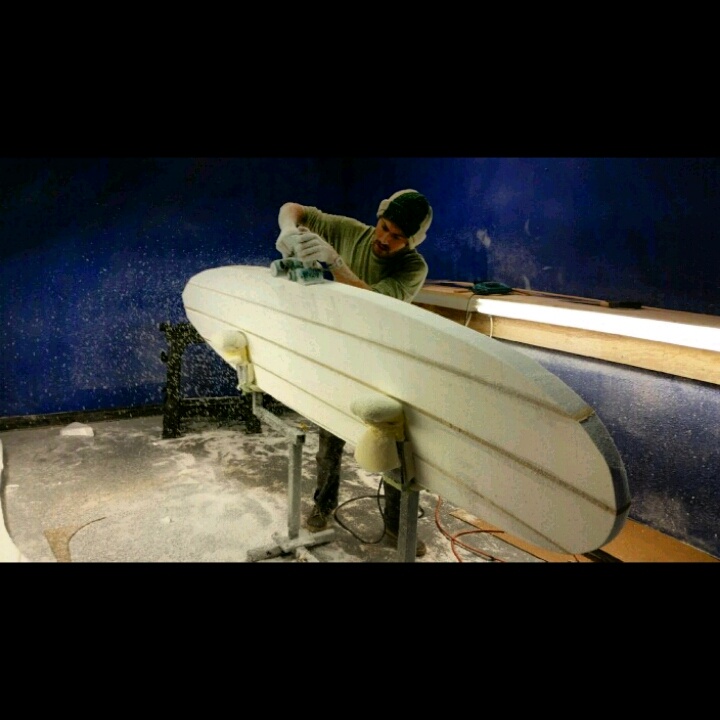
The first board I shaped, shown here, a 9’9″ triple stringer. While living in Texas I saw an advertisement to rent time in a shaping bay. I figured why not? I can learn for the boat and for myself.
I decided to take it back and start from the beginning, basing my design off the late 60’s pig. Being long, flat, and wide – just how they used to like them. This way I could understand the making and riding of a surfboard, from then til now.
Maneuvering through the water on your own craftsmanship opens up many realizations. Making you want to try new ideas.
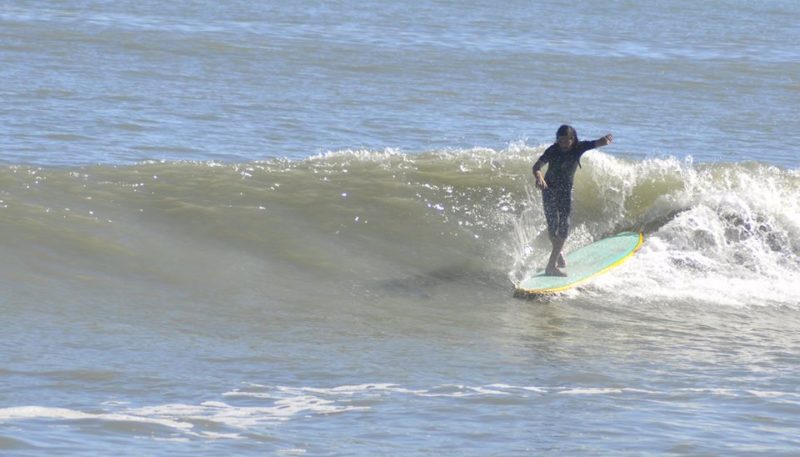
courtesy Red Dawn Designs
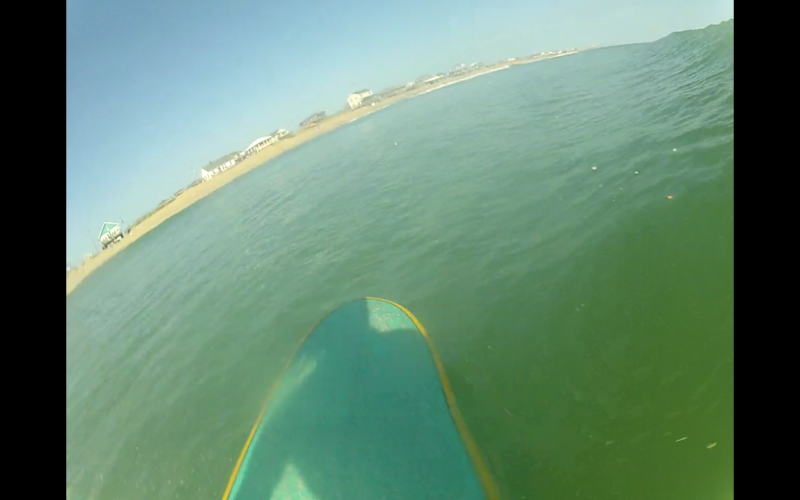
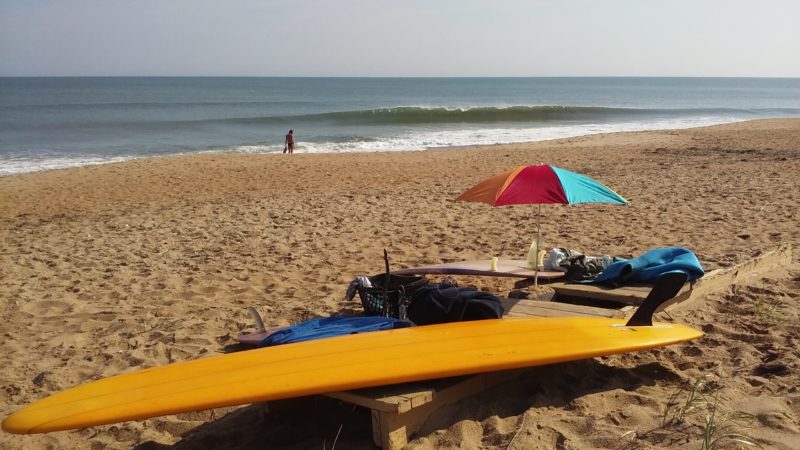
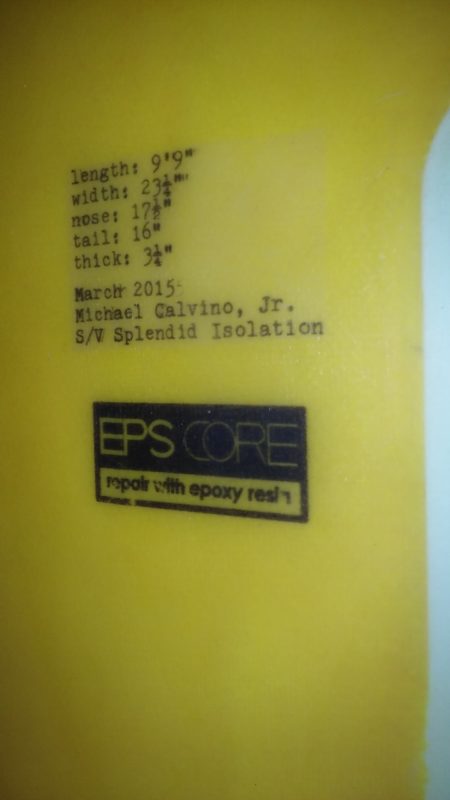
A piece of teak off the sailboat, glassed on as a tail block. This is our only epoxy board, the rest being polyester resin just like our sailboat.
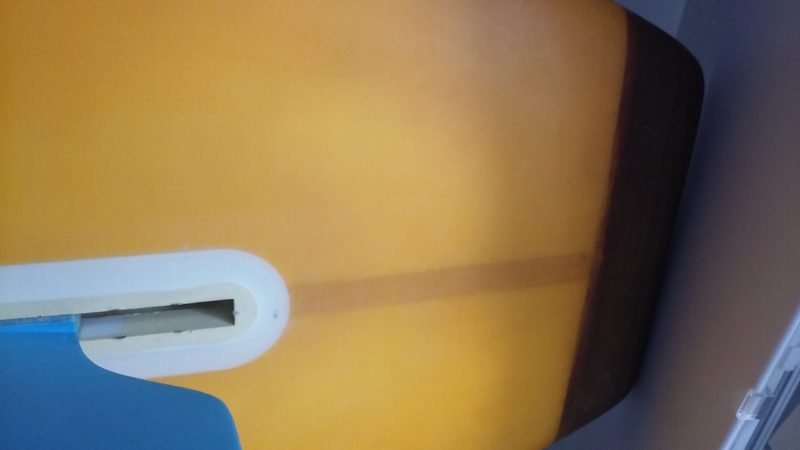
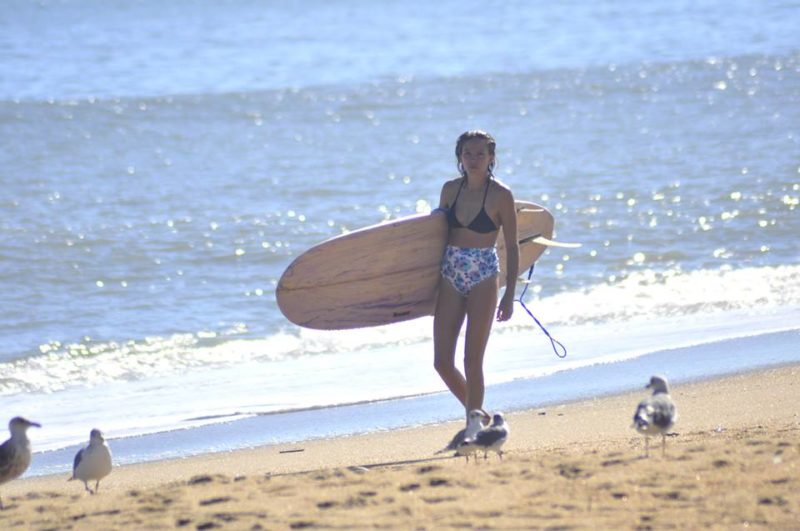
courtesy Red Dawn Designs
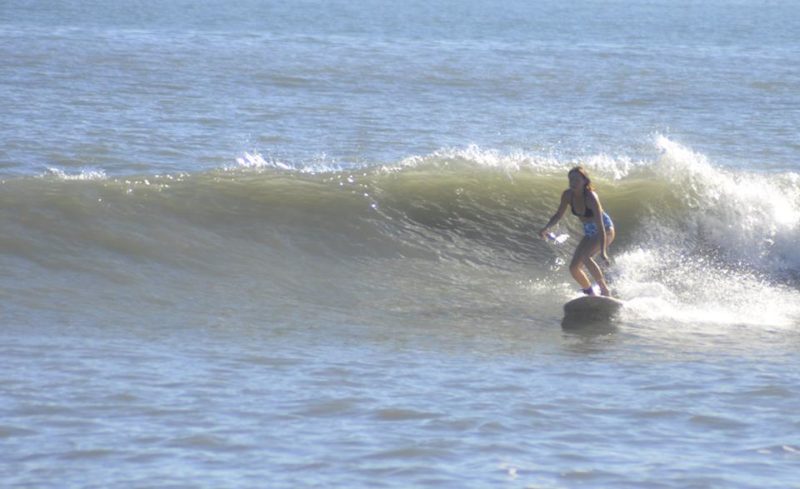
courtesy Red Dawn Designs
Claire enjoying some home town rides in Kitty Hawk. She started getting more serious with her surfing just before we sailed away from California. Believe it or not, she really began to advance while we were living in Texas.
The Gulf of Mexico having shorter wave periods and much more wait time between acceptable conditions – compared to an actual Ocean, this can make things complicated. You have to be more patient with the circumstances presented to you, in order to adapt and learn.
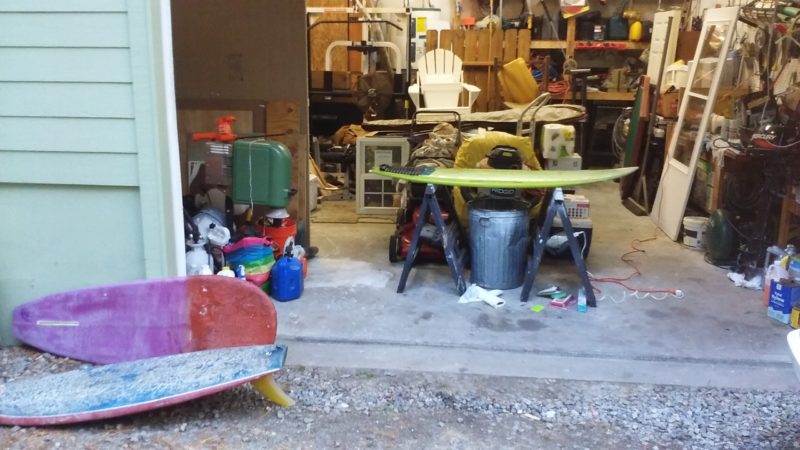
Along with traveling through water, another similarity between surfboards and sailboats is the fiberglass work. Repairs and modifications must happen to both. Having shaped two boards from scratch, while repairing countless. A science and an art that I am learning. Living adrift can make this complicated. My tools are always on the move, usually having to do board repairs at the dock.
We hold eleven boards in our quiver. Six of them currently with us. The others in safe keeping.
People ask “why so many boards?”
I respond, “think of shoes…”
You’ve got your high heels, your running shoes, bedroom slippers, rain boots, hiking boots, flip-flops, and so on.
The way the water works is ever changing. The board’s shape, size, and fin set up have everything to do with you having a comfortable time on the water.
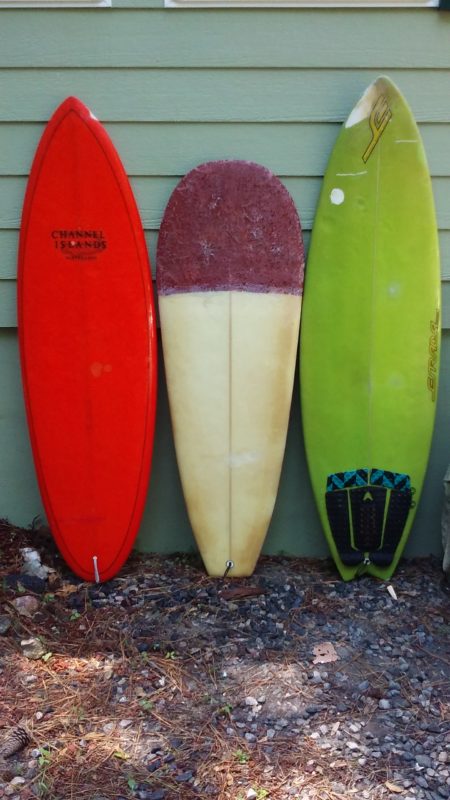
Below, Our prize possession, The Rick James Trestle Special. (7’5″ x 19-7/8″ x 3″ – triple stringer)
Only around 150 of these were made between 1975 to 1980.
Rick James was one of the original shapers in Southern California. Designing this board to ride the bigger waves of “Trestles”, a series of cobblestone breaks near Camp Pendleton. In my opinion, an under-rated man of the industry. He had shops making boards in San Clemente and San Juan Capistrano, learning from and teaching the legends we know today.
During the 1940s and 50s traveling military families were bringing the ideas of surfing back to the West Coast. Dana Point being our original home port, this board holds close to our hearts. Over the summer I finally had the chance to make repairs and take it for some big rides.
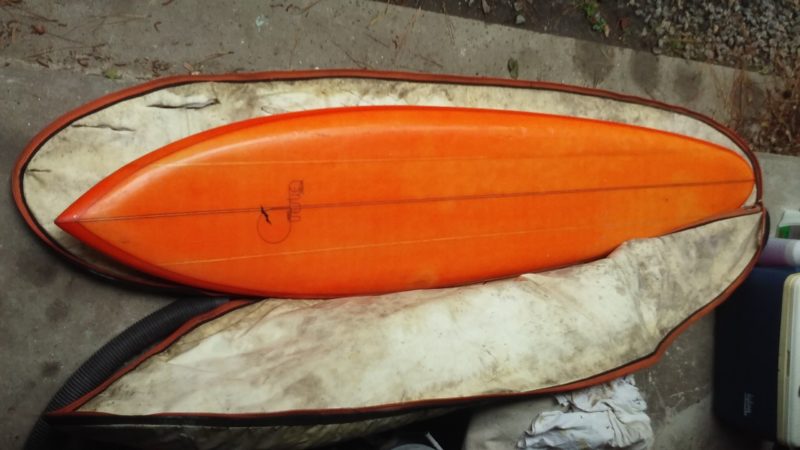
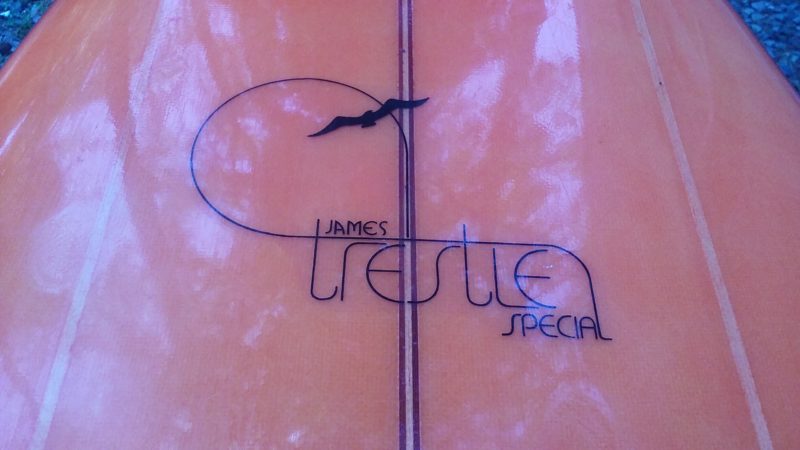
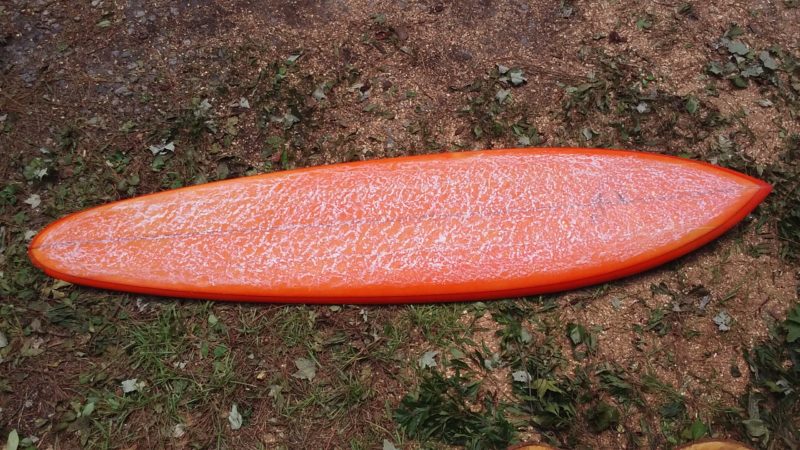
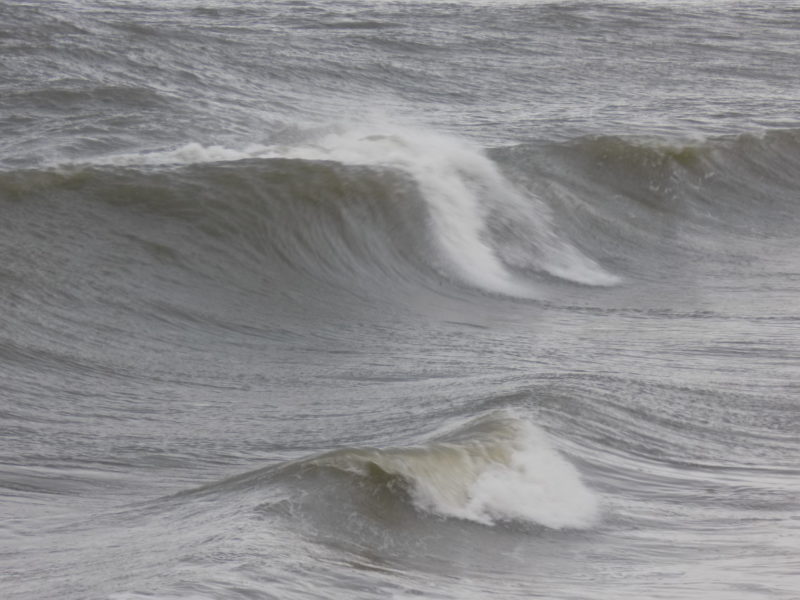
One thing I have been working on is reusing old boards. There are a few reasons behind this. Obviously recycling is good, it is also easier and cheaper for me to start with a broken board.
The board below was a 9’6″ longboard that Claire’s brother Will picked up in Texas. Made from Clark foam, this board was once another’s experiment. The man Will bought this board from used it as his first surfboard shaping lesson. Lucky for me there was an abundance of volume left to play with. The nose and tail in pretty bad shape, it seemed more economical to just peel the whole thing and start over.
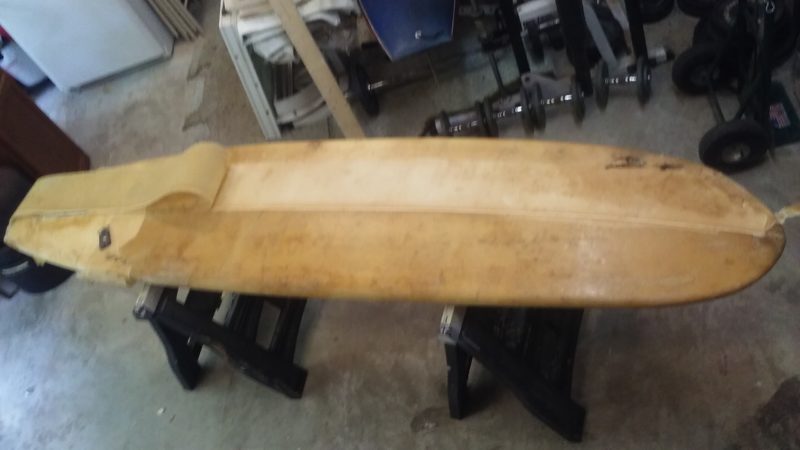
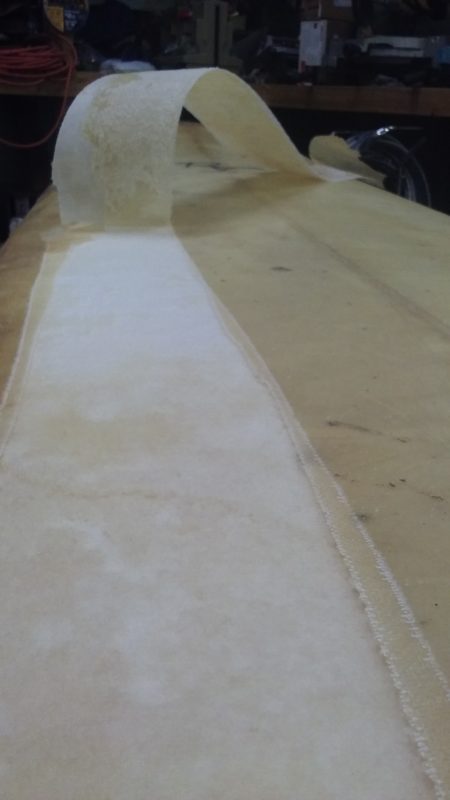
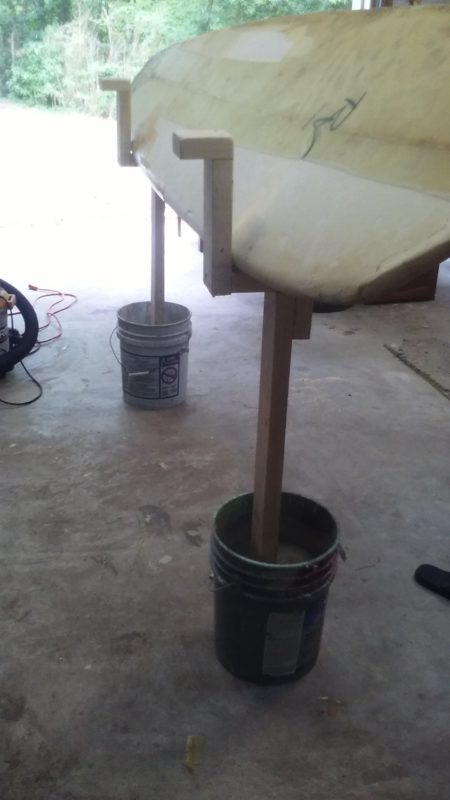
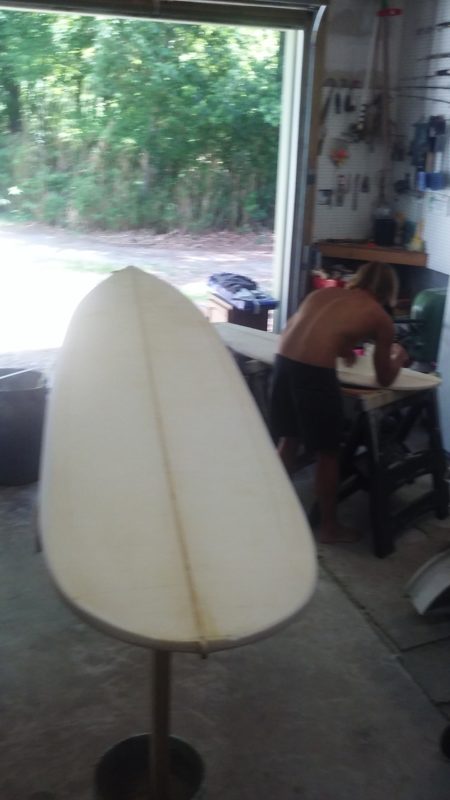
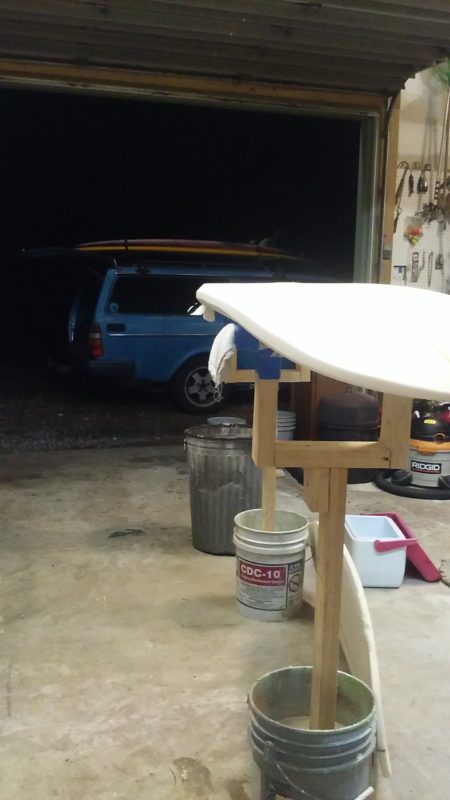
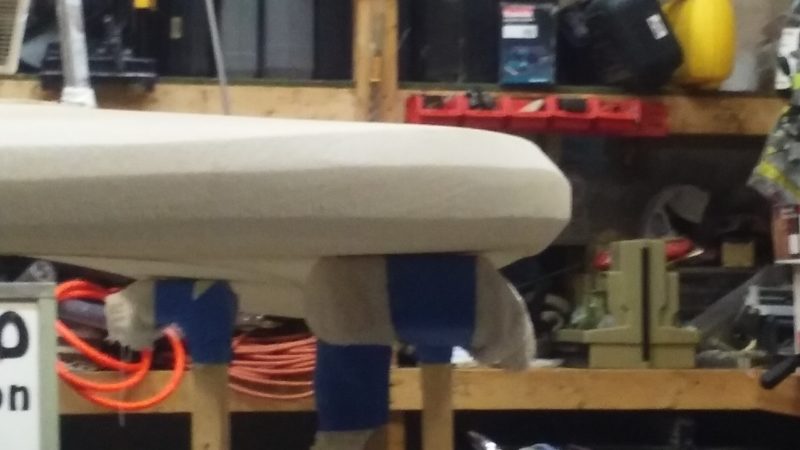

I managed to plane and shave all the yellow old foam away by hand. Giving the rails new foil and bringing the tail into a pin, brought this board down to 8’0.
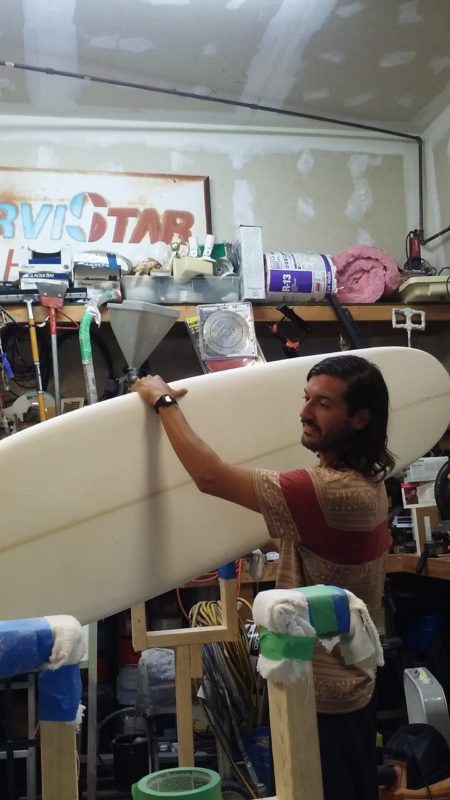
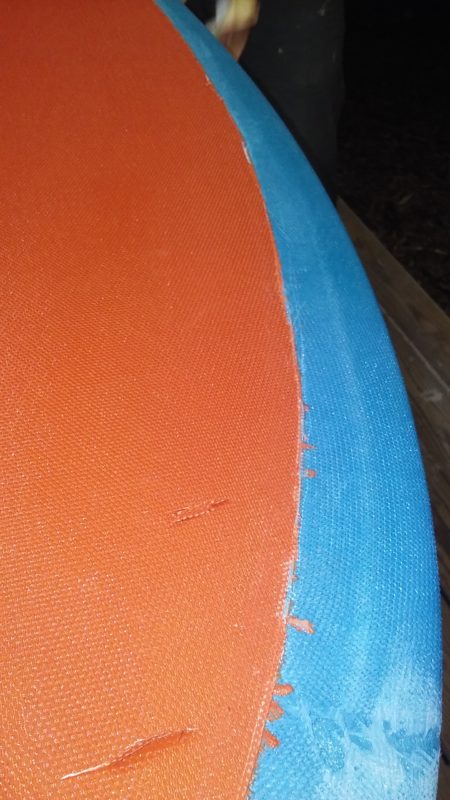
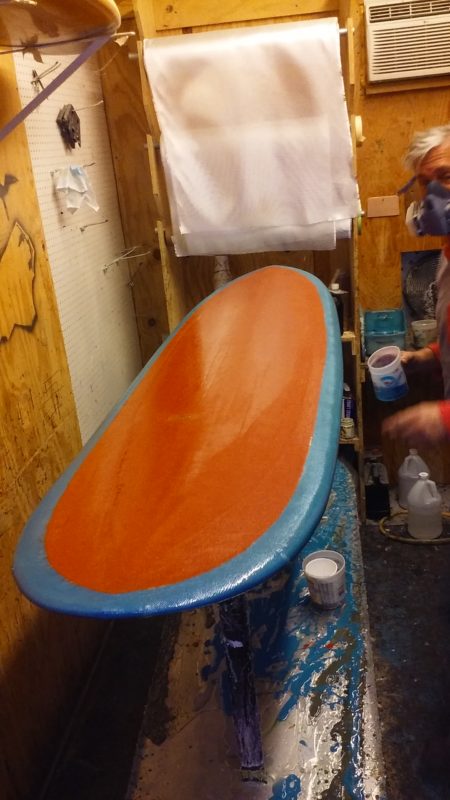
Thanks to Mike Rowe, owner of Hooked Surfboards, for the lesson in glassing.
Typing out my signature on rice paper to be laid under the glass.
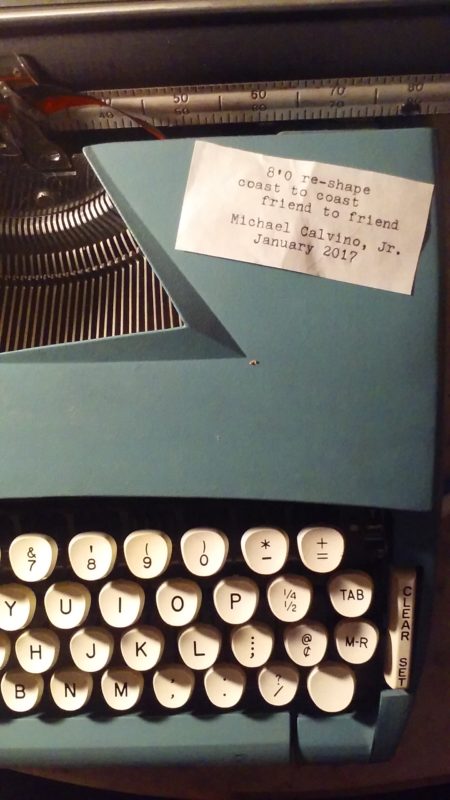
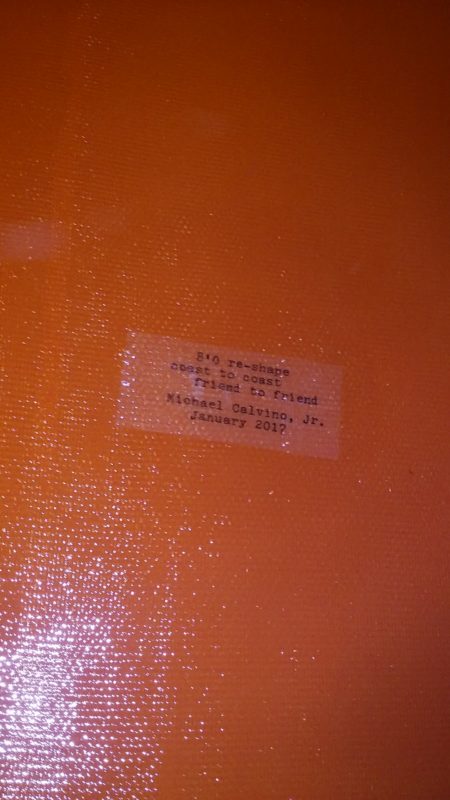
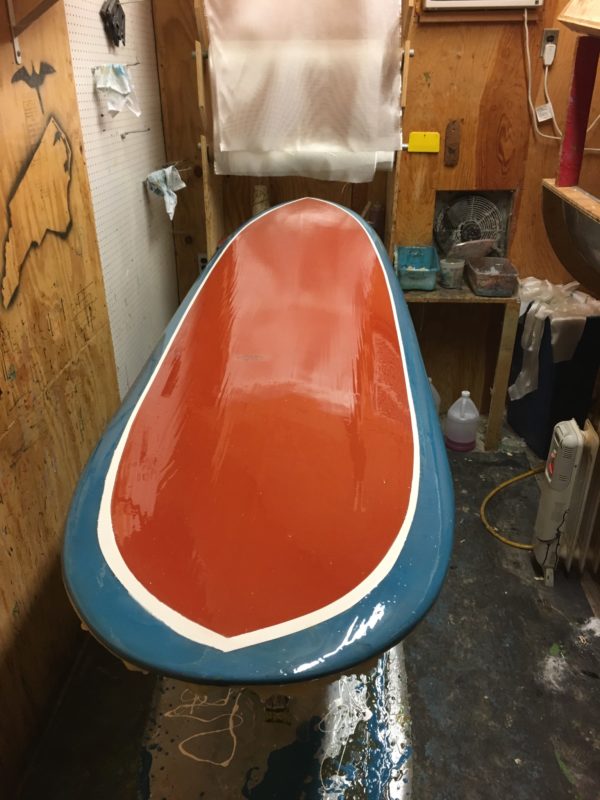
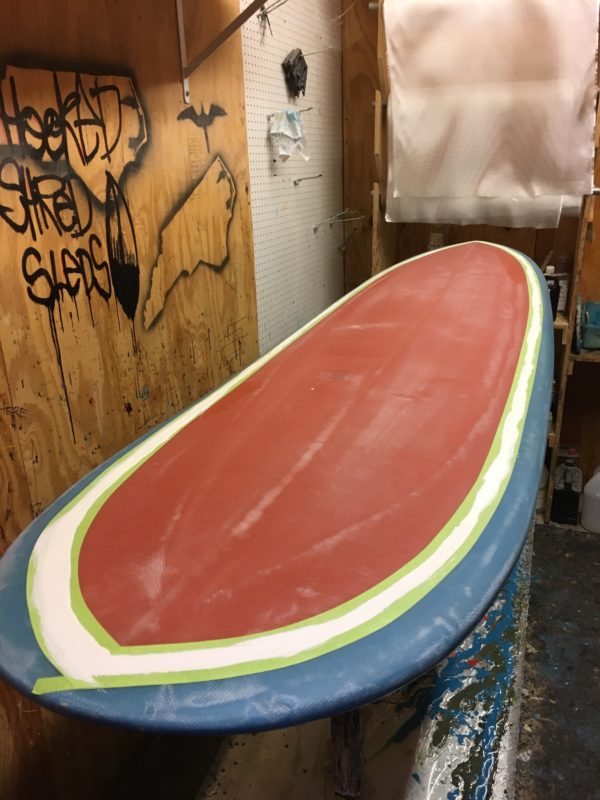
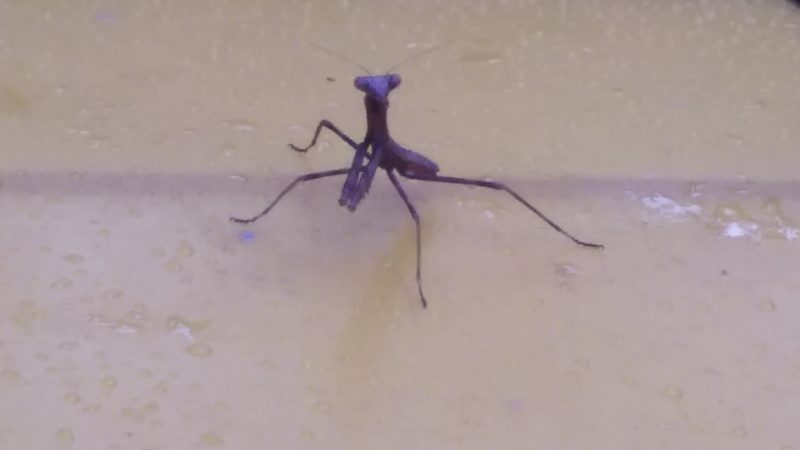
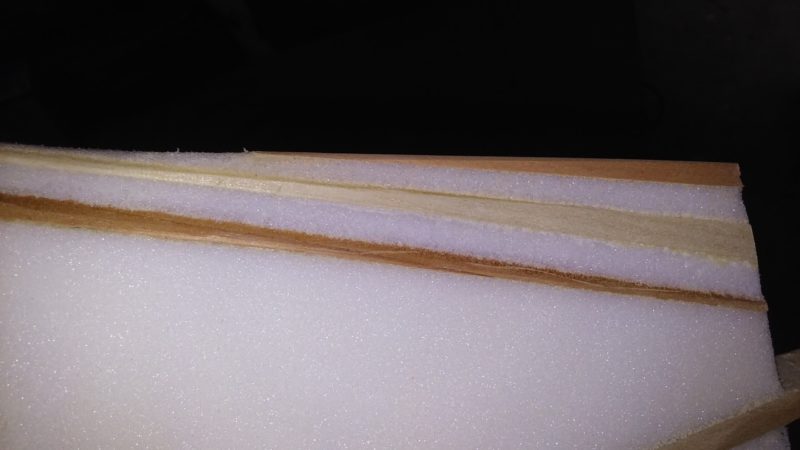
While living aboard our sailboat we have been given the opportunity to ride many different waves in multiple bodies of water. Knowing there is always a better wave coming is just the beginning. Now to get that boat back in order and anchor off a private break!
Enjoy these photos of Will and myself – Outer Banks surf 2016.
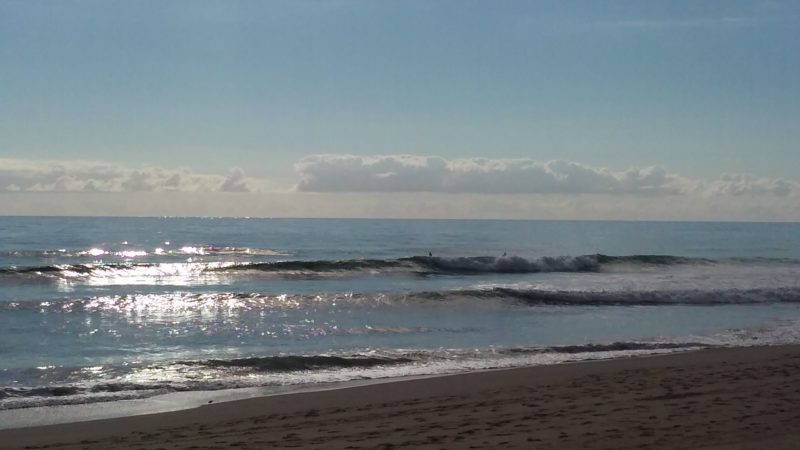

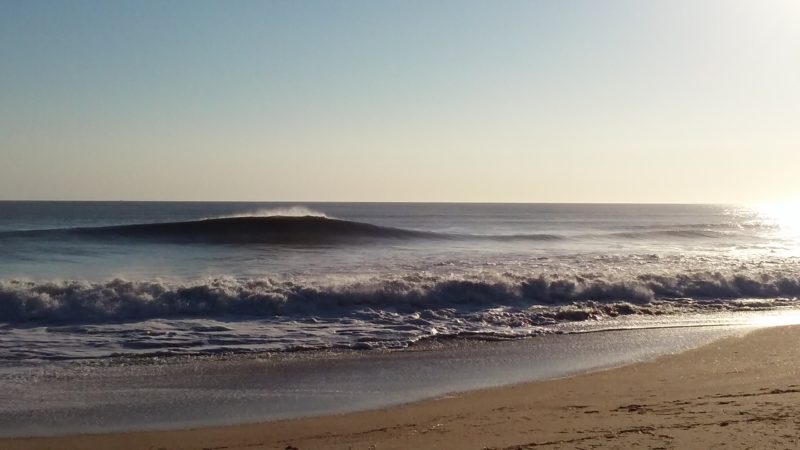
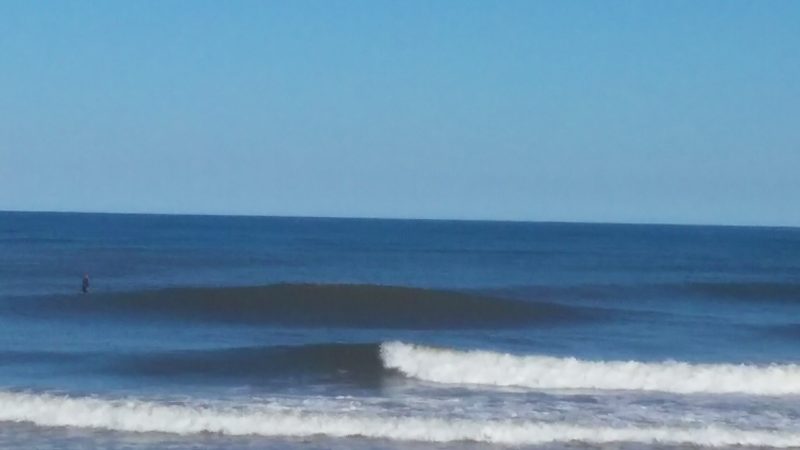
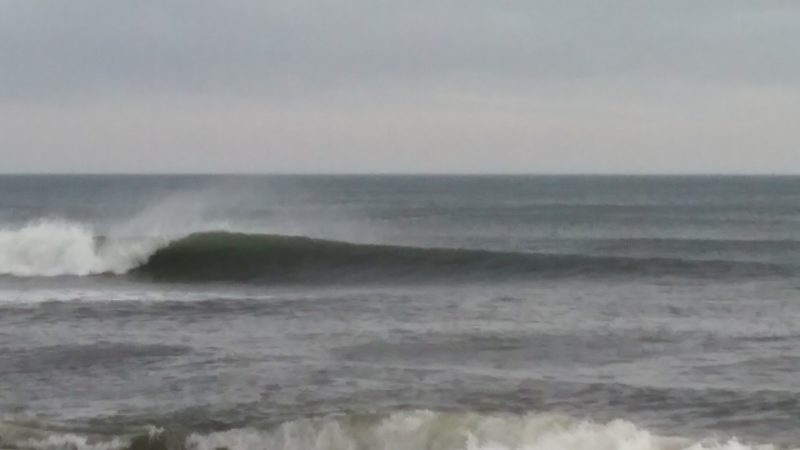
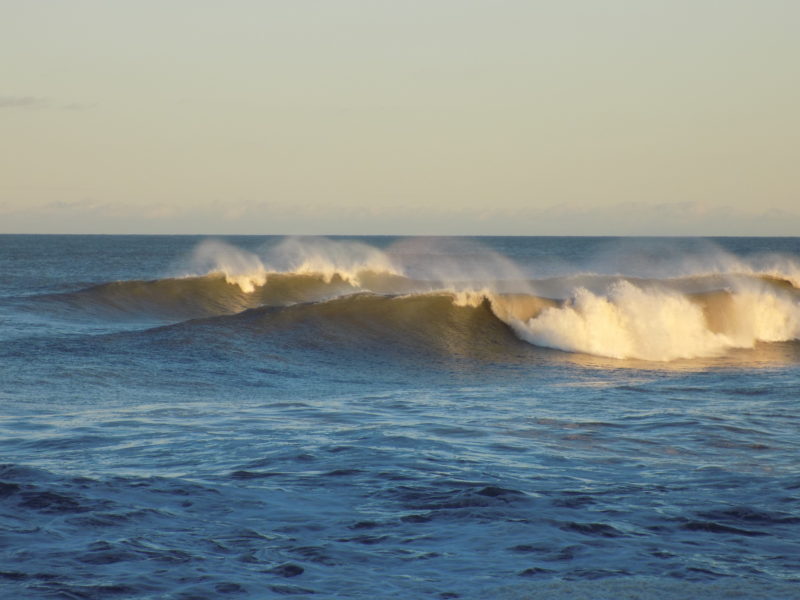
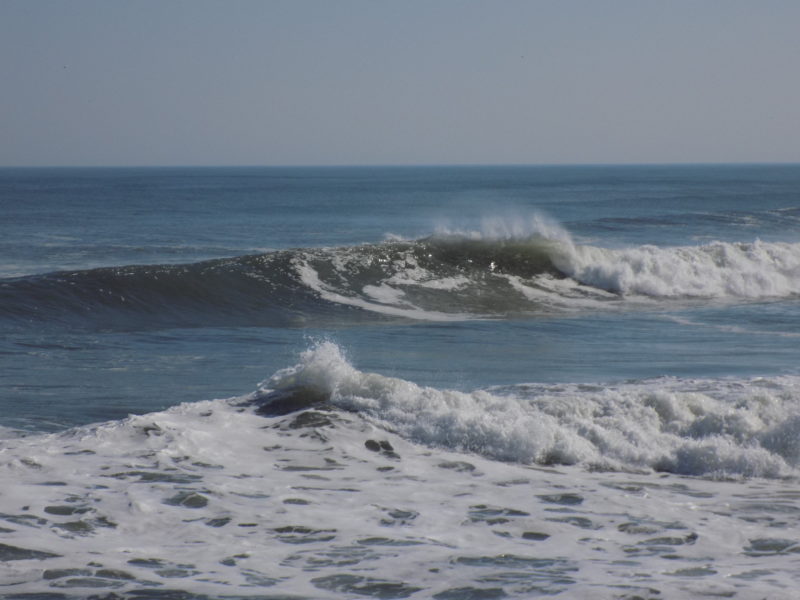
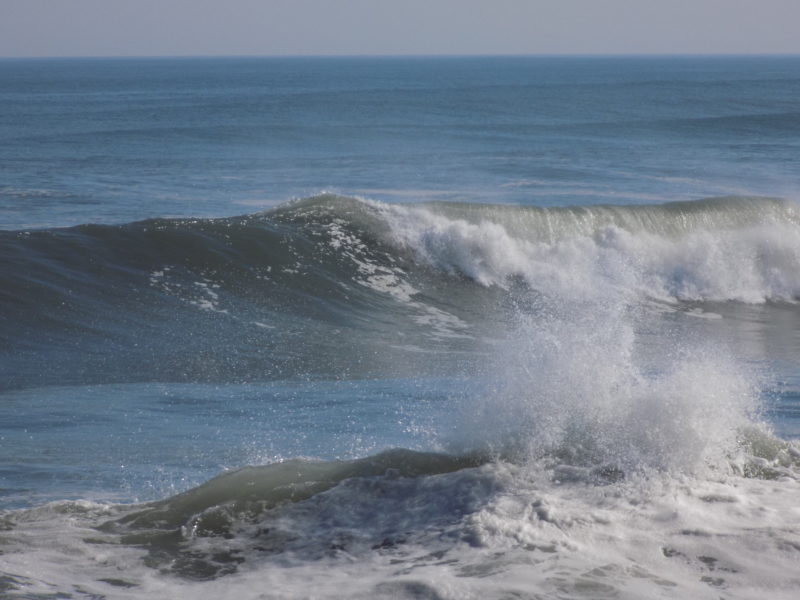
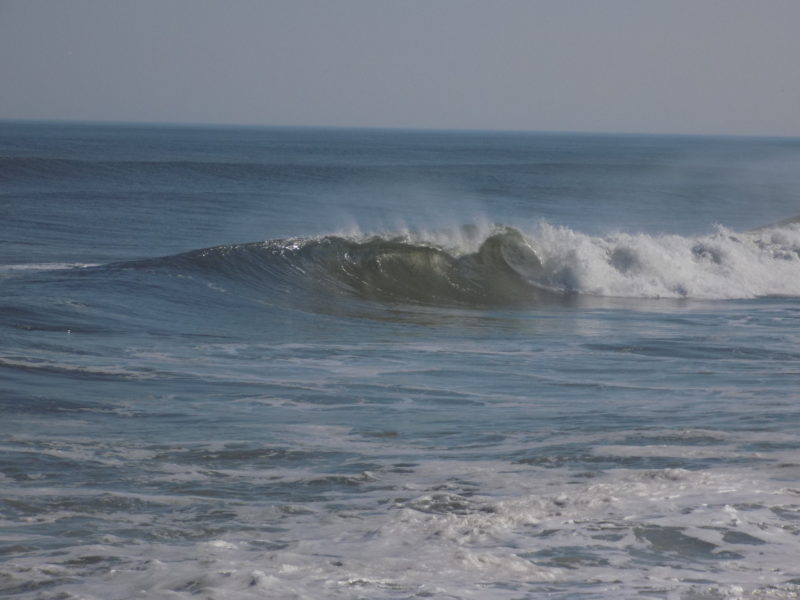
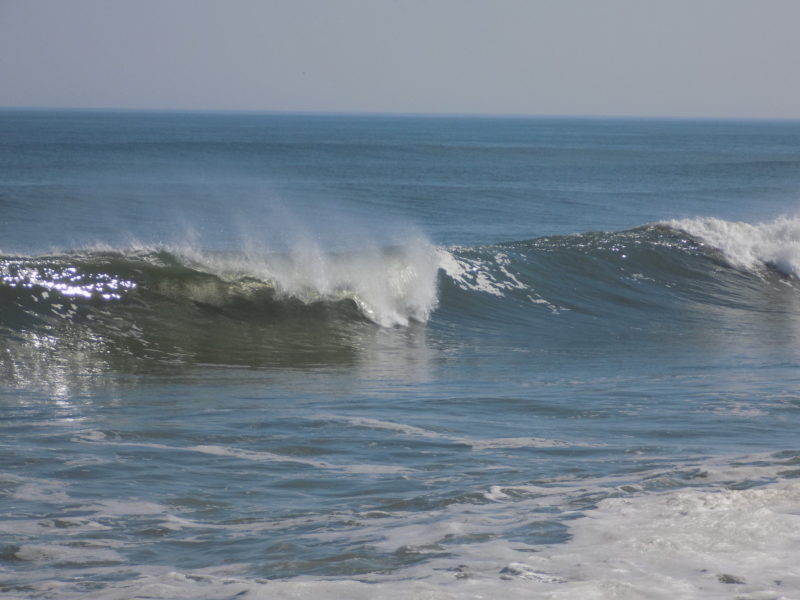
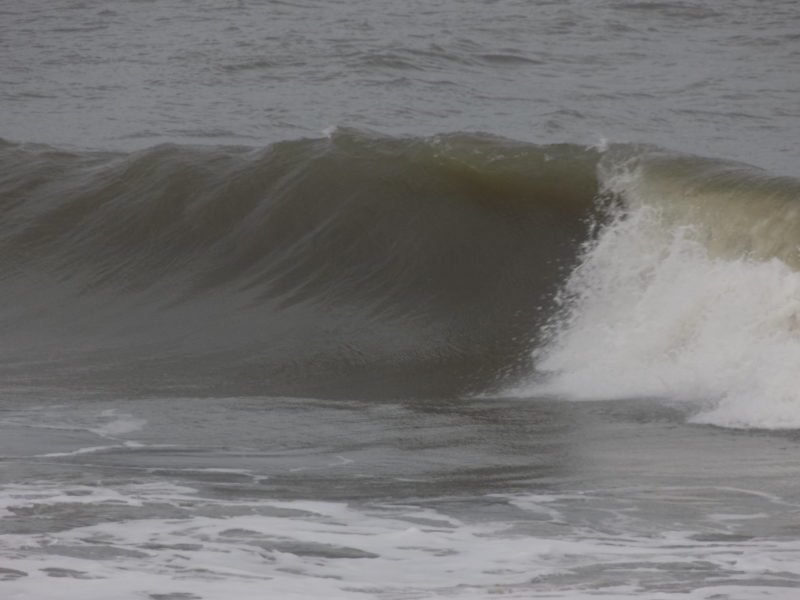
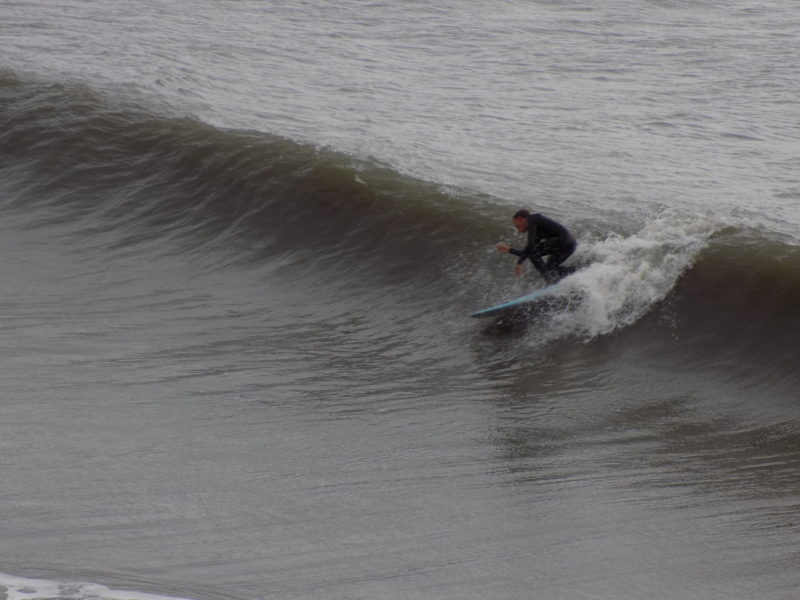
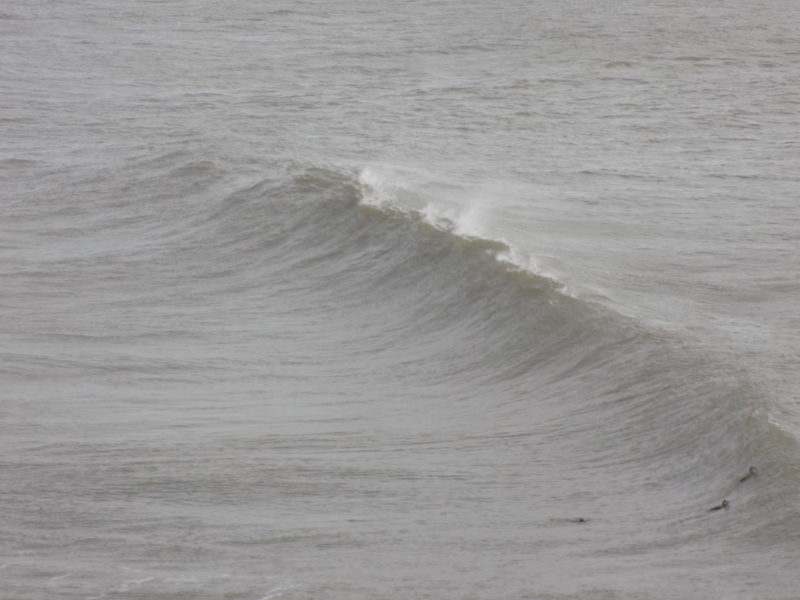
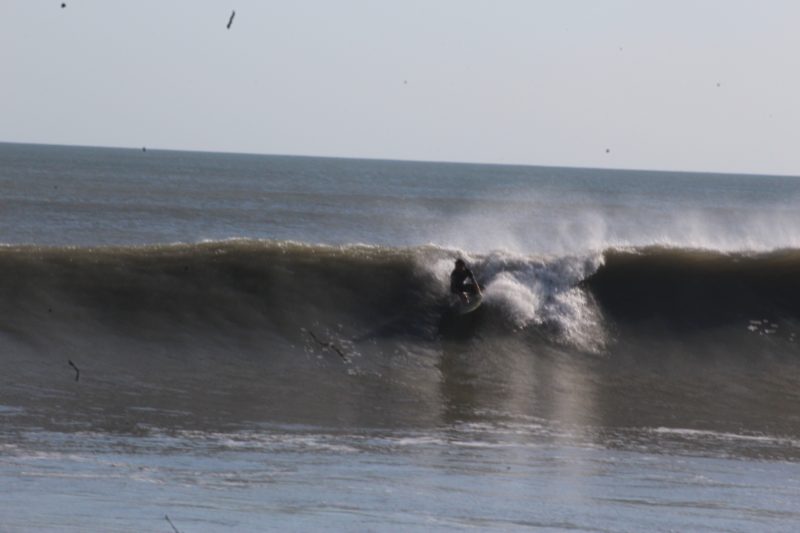
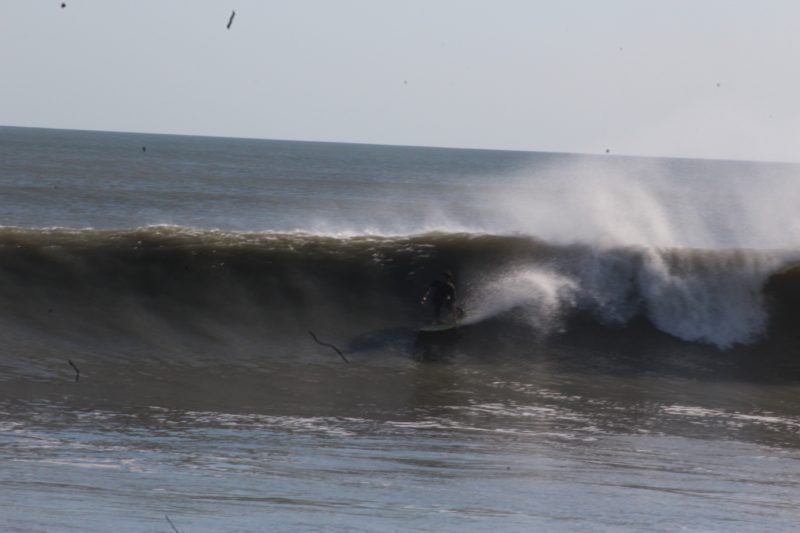
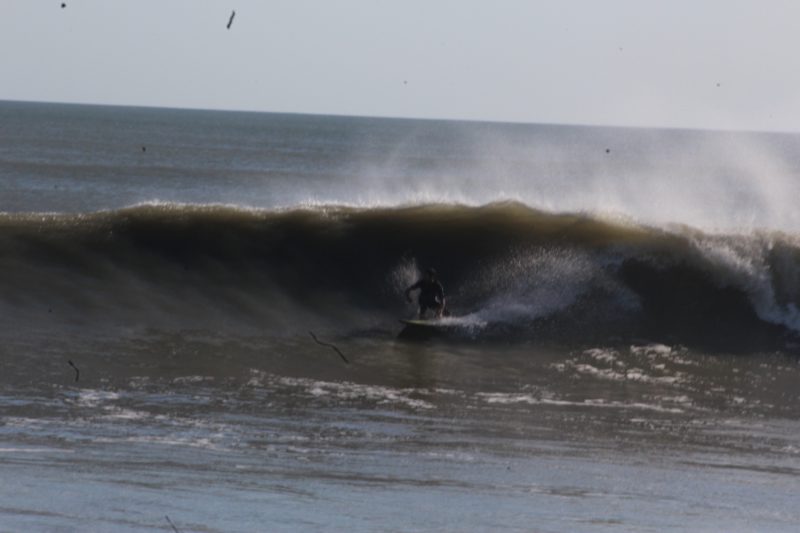

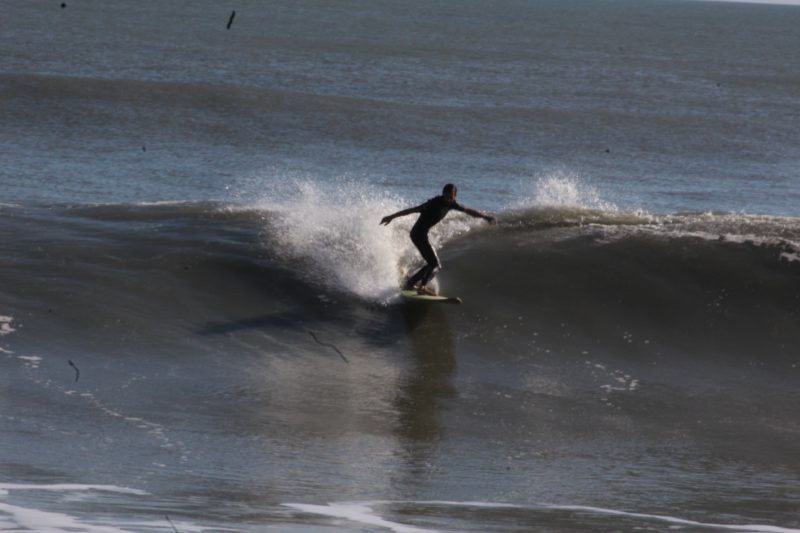

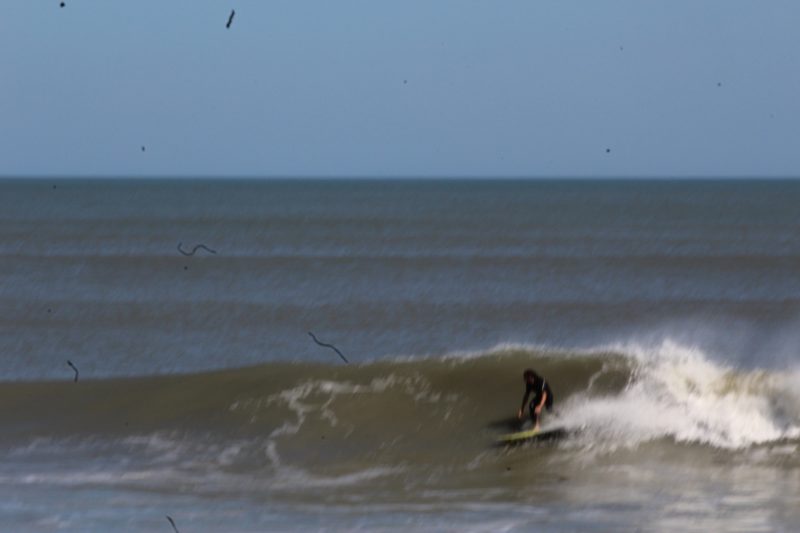
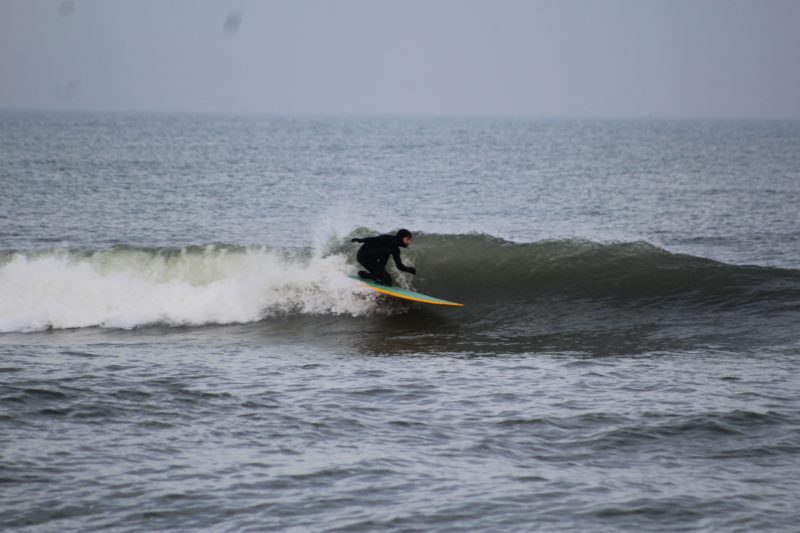
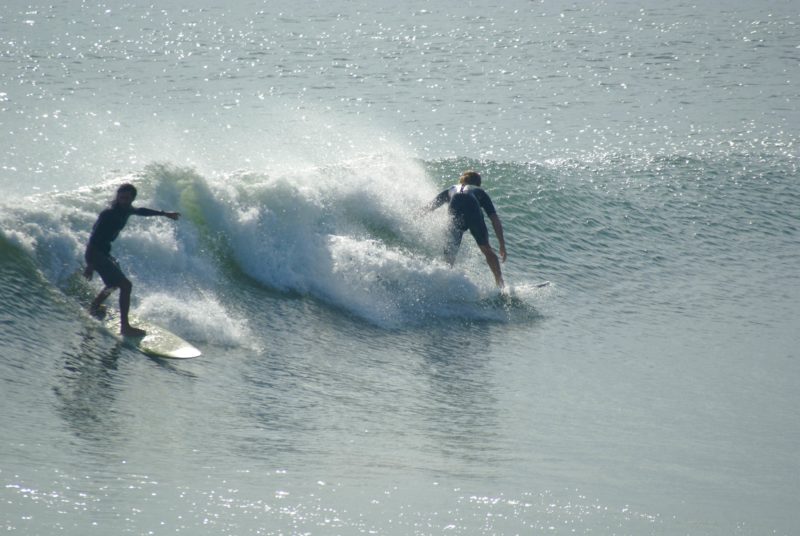
courtesy Amanda Gibson
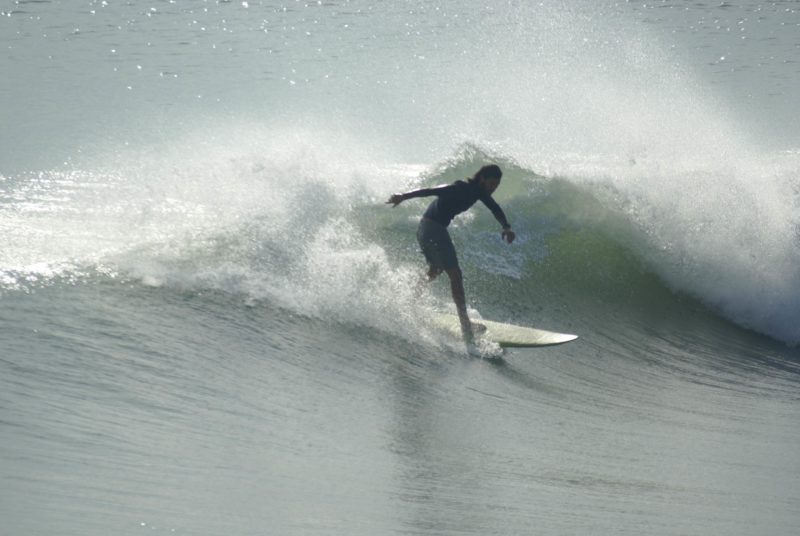
courtesy Amanda Gibson
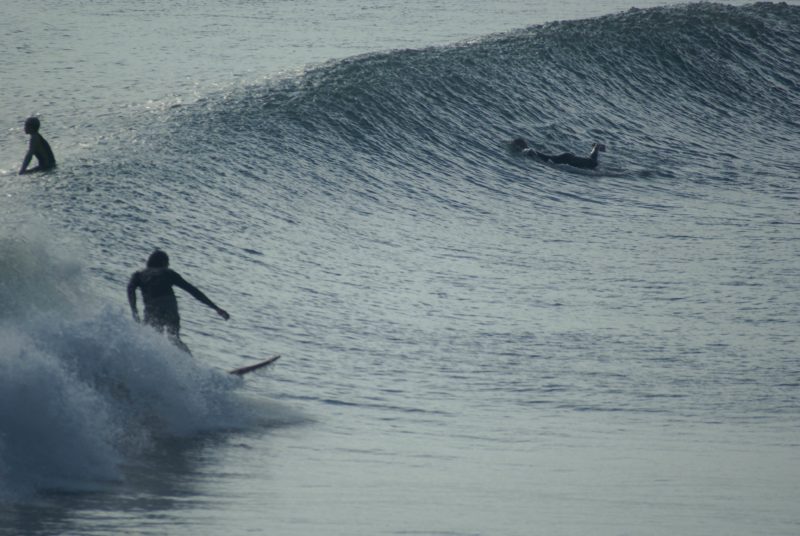
courtesy Amanda Gibson
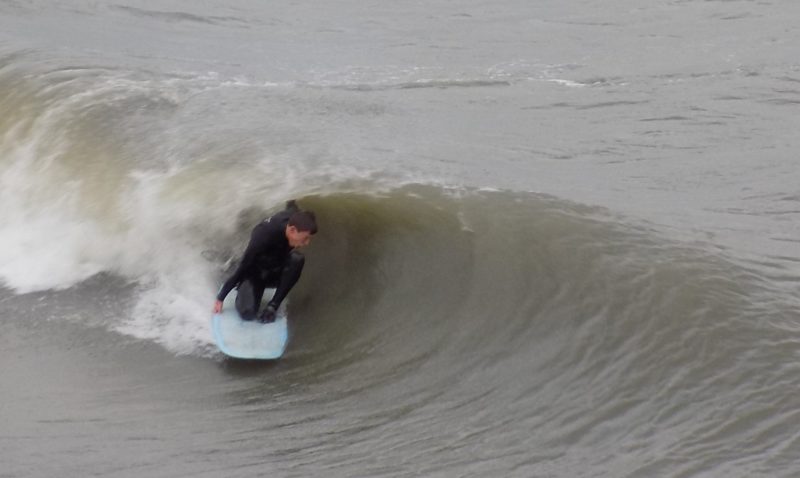
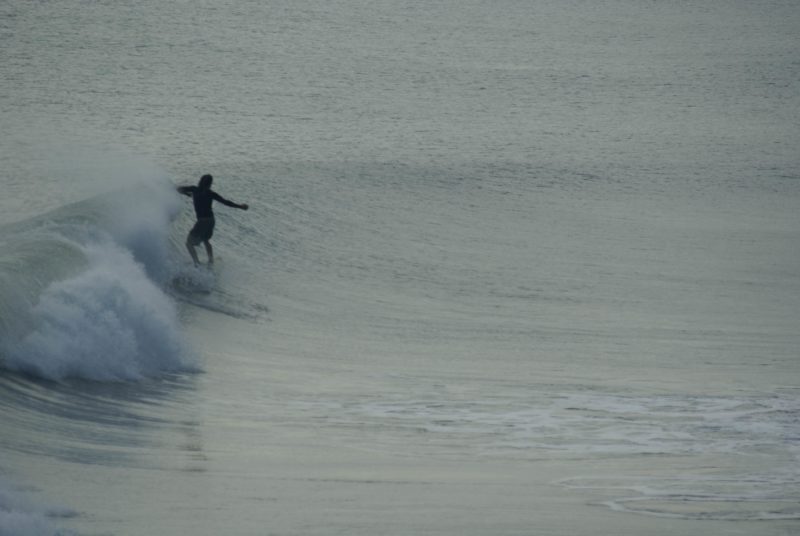
courtesy Amanda Gibson

No comments yet.